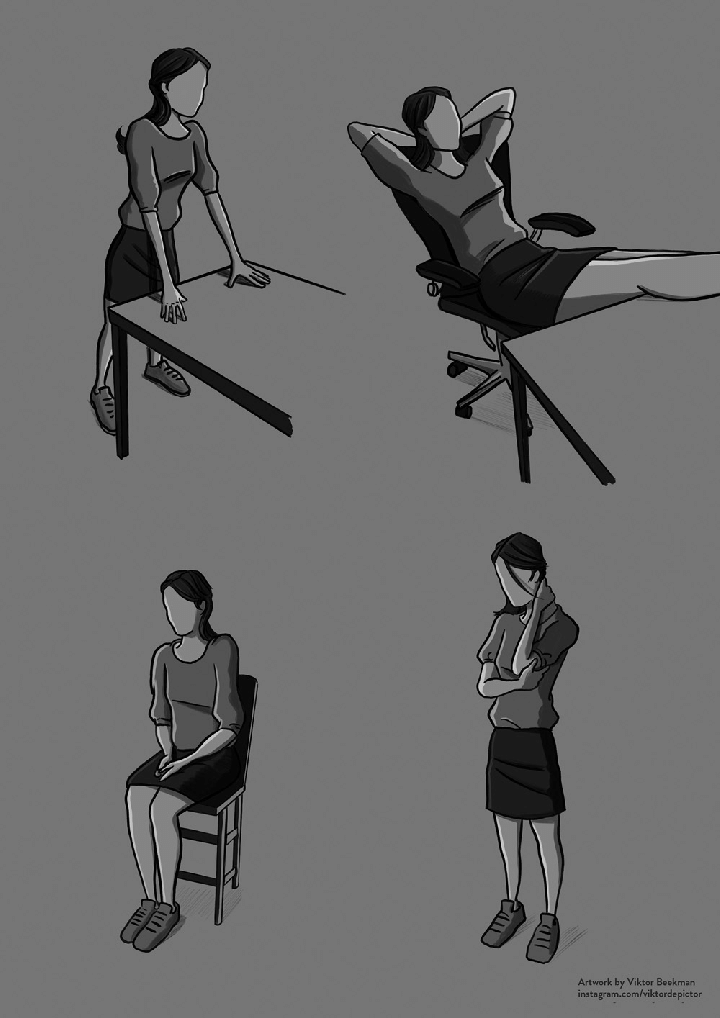Power Up For A Better Work Day
I try to offer simple, helpful tools that help manage anxiety even when you’re stuck in meetings.
These include cognitive skills and body-based interventions because our bodies can offer incredible strength when our minds are fried (watch my interview with Emma Seppälä, Ph.D. for some fantastic advice). Many traditional therapies rely on having the mind regulate the nervous system. But if you've ever had an anxiety attack or been rendered speechless in a tense meeting, you know our cognition often fails us in those moments.
Instead, you can use your body to regulate your mind, says Sue Mann, an executive coach. "Practices like yoga, exercise, dancing, grounding techniques, massage and acupuncture can really help professionals who use their minds a lot but are disconnected from their bodies." When I think about my typical day on endless Zooms, I can’t imagine a life more disconnected from my body. That doesn’t feel good to me.
Amanda Baker, director of the Center for Anxiety and Traumatic Stress Disorders and a psychologist at Mass General, notes “Typical talk therapies such as CBT engage only the mind, not the body, encouraging people to become aware of disturbing thoughts and behavior patterns and work to change them. But in somatic therapy, the body is the starting point to achieve healing." A body based approach differs from popular practices like mindfulness meditation in that it homes in specifically on bodily sensations rather than observing thoughts/feelings non-judgmentally.
Body based practices can help us regulate during encounters where too much intensity floods us with strong emotions like anxiety, panic, anger or impulsiveness. Our fight-or-flight responses kick in, making it difficult to think rationally or regulate our behavior. My podcast guest Matthew Cooke took us through the "window of tolerance" or "window of presence" -- the optimal zone of arousal/intensity where we can function and thrive. Too little arousal and we feel flat/unmotivated, too much and we get overwhelmed. The goal is maintaining that just-right middle zone - the window of tolerance. In the window, we can remain present, adaptive and resilient in the face of life's inevitable stresses and adversities. It's an ongoing practice of self-awareness and self-regulation. When we start edging out of the window, we can use tools like breathwork, mindfulness, grounding techniques and social support to pull ourselves back to center. The wider we can expand this optimal window, the more we can thrive, says Cooke.
So start tuning into your individual window of tolerance. Notice when you get hijacked by emotional overwhelm-- and which people or situations trigger it.
Self-regulation is the ability to maintain ourselves within that optimal window, by increasing or decreasing our arousal levels as needed through techniques like breathing, grounding, etc. Cooke notes that the goal is not to flatline at perfect calm, but to increase our resilience by getting better at re-regulating ourselves back into the window of presence after inevitable bouts of dysregulation. So how can you practically use your body to fight anxiety at work? Here's one of my colleague Sue Mann, PCC, BCC, MBA's favorite micro-tools; practice it and see if it works. I’ve been doing it consistently and it works for me, even if it feels silly at first! It’s the "High-Low Power Pose" technique, drawing from Dana Carney, Amy Cuddy, and Andy Yap's work. Sue used this technique years ago when she felt “utterly panicked’ before meetings with a cruel manager. “Shifting into a high power pose allowed me to remain calm, think clearly, and navigate the situation with dignity.” I call these opening poses because that's what it is- opening your body to strength and possibility.
Practice feeling the difference between low and high power poses. You can listen to this short guided practice from Sue.
First, get into a "low power pose" - slouched, curled in, protected. Say affirmations like "I am brave and powerful" while in this pose. Notice how the words feel empty, not matching your body.
Then, shift into an expansive "high power pose" - shoulders back, chin up, chest open. Be big. Say diminishing statements like "I am small" from this pose. You'll likely laugh at how silly and unbelievable it feels coming from this powerful physicality.
Our bodies influence our mood and mindset more than we realize. Next time you need to show up confidently at work, try opening up into a high power pose beforehand. It can provide stabilizing strength when your mind alone fails you. I've told you before that when I get very anxious in meetings, I can lose the ability to speak. And so my high power pose tweak is tipping back my head to open up my throat. The reminds me not to stay silent or feel trapped.
Let me know if you try this body-based approach! Sending resilience your way.
Morra
PS: I am not here to fight with you about whether power posing is bad science or not. I tried it and it worked for me, as it does for many. These results are subjective but that doesn’t mean they are wrong. Read more about the controversy and tortured history of power poses here.



